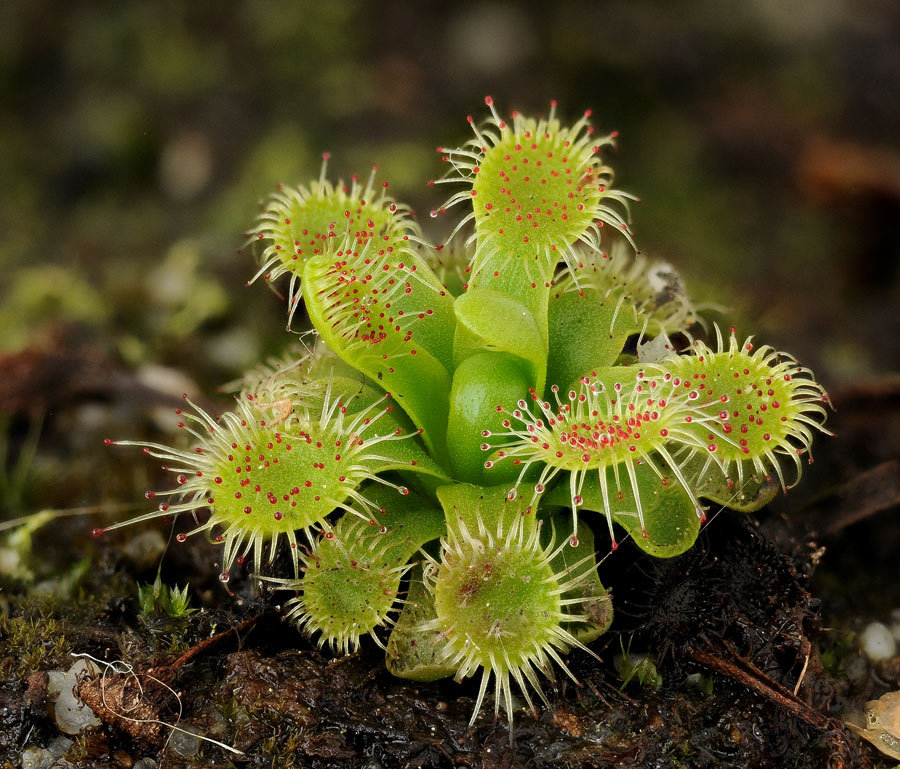Drosera glanduligera is a sundew (Droseraceae) from southwestern Australia growing in all kinds of soils. It supplements its diet with arthropods. It has evolved a sophisticated catapult mechanism to capture prey. The hairs found on the surfaces plants are called trichomes. Each trichome is a projection made out of one single cell. Trichomes are quite versatile structures. They can be tweaked to repel or capture water, reflect away or concentrate (focus) light on the photosynthetic cells. They can accumulate irritating and toxic chemicals as a defense against herbivores. Here in the Droseraceae family trichomes have evolved into sticky structures that function like tentacles.
Drosera glanduligera have taken this adaptation further with touch-sensitive tentacles. This increases the capture efficiency of this predatory plant by expanding the radius of influence. Plant in a way appears larger that itself. Touch-sensitive snap-tentacles can swiftly catapult prey onto adjacent sticky glue-tentacles. The prey are then drawn within the concave trap leaf by sticky tentacles. This is the first detailed documentation and analysis of such catapult-flypaper traps in action and highlights a unique and surprisingly complex mechanical adaptation to carnivory. The snap-tentacle movement is for one time use only and with a growing season of about four months the plant develops new leaves every three to four days.
The project was filmed and edited by Siegfried R. H. Hartmeyer in collaboration with the Plant Biomechanics Group of the Botanic Garden of the University Freiburg with Dr. Thomas Speck and was published in PLoS ONE.
Photographs below are from the Carnivorous Plants UK website.




0 Comments
You can be the first one to leave a comment.